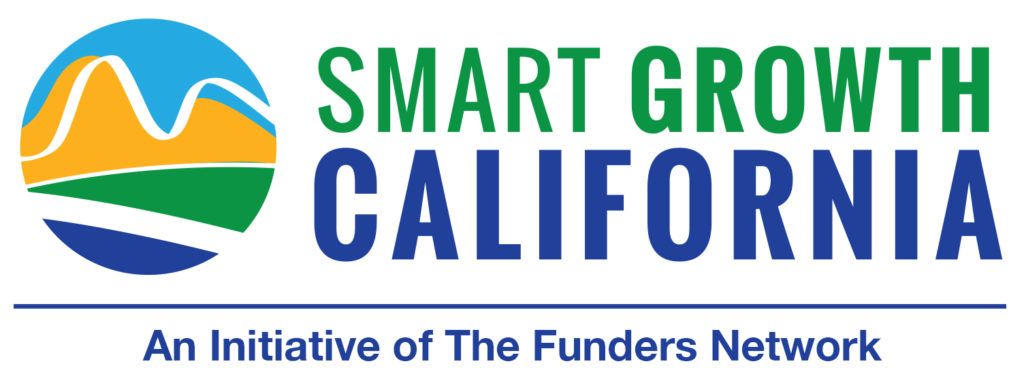Naturally Stronger: How Natural Water Infrastructure Can Save Money and Improve Lives
This report provides an overview of the numerous challenges facing our nation’s waste water, drinking water, and stormwater systems including sewage overflows, aging pipes, polluted stormwater, and agricultural runoff.
READ MORE >March 2017
American Rivers
water
The Value of Linking Good Construction Jobs to California’s Housing Reforms
This study shows that linking prevailing wage standards with proposed reforms to streamline new housing development in California would close the affordability gap, save state and local governments tens of millions of dollars annually, and disproportionately benefit communities of color.
READ MORE >March 2017
Smart Cities Prevail
affordable housing, economic opportunity, social justice
Creating Change through Arts, Culture, and Equitable Development: A Policy and Practice Primer
The policy approaches highlighted in this report are meant to inspire further equity-focused arts and culture policy action in partnership with community agencies and organizations that can lead to tangible positive results.
READ MORE >March 2017
PolicyLink
community development, economic opportunity, social justice
Essential Capacities for Urban Climate Adaptation
This report presents a unique framework for urban climate adaptation that identifies seven essential capacities that cities need to develop so they can effectively implement climate adaptation actions in the short- and long-term.
READ MORE >March 2017
Innovation Network for Communities
climate change
The Caltrain Corridor Vision Plan
The Caltrain Corridor, home of the Silicon Valley innovation economy, holds much of the Bay Area’s promise and opportunity, but its transportation system is breaking down. Along this corridor — which includes Hwy 101 and Caltrain rail service from San Francisco to San Jose — the typical methods of getting around have become untenable.
READ MORE >February 2017
SPUR
community development, transit-oriented development, transportation
Silent Barriers to Bicycling, Part 1: Exploring Black and Latino Bicycling Experiences
This blog series explores new research about the perceptions of Black and Latino Americans about biking, in order to inform biking advocacy. The assumptions and practices of biking advocacy have been disproportionately shaped by the white and the well-to-do.
READ MORE >February 2017
Better Bike Share Partnership
social justice, walking and bicycling
Inclusionary Housing Working Group: Final Report
Proposition C made significant changes to San Francisco’s established Inclusionary Housing Program. This report makes recommendations for improving the program based on research and analysis. The recommendations include imposing different inclusionary housing requirements on rental and for-sale (condominium) properties, additional affordability requirements for 80/20 projects financed through the City’s financing approval process, and more.
READ MORE >February 2017
San Francisco Controller's Office
affordable housing, community development
Silicon Valley Bike Vision
This report documents the existing physical environment for bicyclists in Silicon Valley, discusses the current challenges that prevent people from biking, presents a rationale for making investments in bicycling facilities, and offers next steps for creating a safe, continuous, and connected bikeway network. Silicon Valley Bike Vision also provides a resource for other regions working to improve bike safety.
READ MORE >February 2017
Joint Venture Silicon Valley and the Silicon Valley Bicycle Coalition
walking and bicycling
Silicon Valley Competitiveness and Innovation Project: 2017 Report
This report is part of a multi-year effort to assess the region’s economic health and advance a shared policy agenda. The 2017 report shows that rising housing costs, longer commute times, and growing opportunities in other innovation regions are drawing more residents away.
READ MORE >February 2017
Silicon Valley Community Foundation and the Silicon Valley Leadership Group
affordable housing, gentrification and displacement, transportation
Rolling Back Inclusion: Tracking the Assault on Community Development
This resource tracks the new federal attacks on inclusive community development here, along with state-level measures enabled and encouraged by the new federal context.
READ MORE >January 2017
The Democracy Collaborative
climate change, community development, social justice
Smart Growth Fixes for Climate Adaptation and Resilience
This publication seeks to help local government officials, staff, and boards find strategies to prepare for climate change impacts through land use and building policies. The policy options described here bring multiple short- and long-term environmental, economic, health, and societal benefits that can not only prepare a community and its residents and businesses for the impacts of climate change, but also improve everyday life.
READ MORE >January 2017
United States Environmental Protection Agency
climate change, transit-oriented development
Californians’ Views on Climate Change
This new set of public opinion data deals with Californians’ views on climate change.
READ MORE >January 2017
Public Policy Institute of California
clean energy, climate change
Dangerous by Design 2016
The fourth edition of this report once again ranks the most dangerous places for people walking by a “Pedestrian Danger Index,” or PDI. It also explores who is most at risk of being struck and killed by a car while walking, including data that looks at pedestrians by age, race, ethnicity, and income.
READ MORE >January 2017
Smart Growth America
transportation, walking and bicycling
The How and Why of Measuring Access to Opportunity: A Guide to Performance Management
This resource provides the data, tools, and methodologies transportation officials need to measure access to opportunity so this can be made part of planning and investment decisions.
READ MORE >January 2017
Smart Growth America
economic opportunity, social justice, transportation
The Curb-Cut Effect
Laws and programs designed to benefit vulnerable groups, such as the disabled or people of color, often end up benefiting all of society. There’s an ingrained societal suspicion that intentionally supporting one group in society hurts another. That equity is a zero sum game. In fact, when the nation targets support where it is needed most – when we create the circumstances that allow those who have been left behind to participate and contribute fully – everyone wins.
READ MORE >January 2017
Standford Social Innovation Review
economic opportunity, social justice

